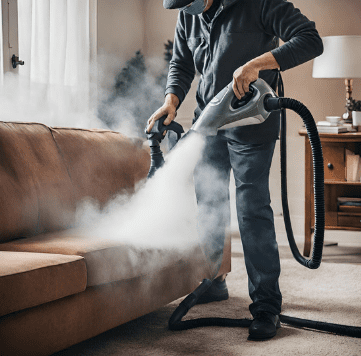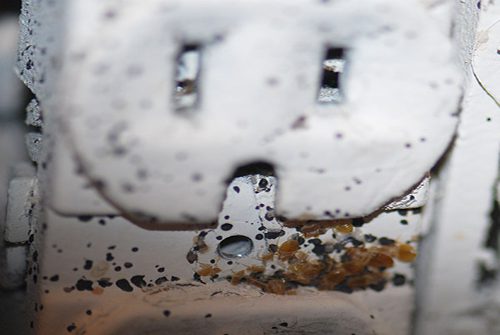Introduction: Understanding Bed Bugs
Effective Strategies to Eliminate Bed Bugs. Welcome to our comprehensive guide on the best ways to eliminate bed bugs. In this section, we delve into the world of bed bugs, scientifically known as Cimex lectularius, offering you a clear understanding of these persistent pests. Recognizing the gravity of effective eradication is crucial in our journey towards a bed bug-free environment. …Click Here to Read more about Bed Bugs!
Bed bugs are small, nocturnal insects that feed on human blood, often causing discomfort and stress in affected households. Understanding their behavior, life cycle, and habitats is key to combating them effectively. Contrary to common belief, bed bugs are not a result of poor hygiene or cleanliness. They are opportunistic hitchhikers that can infest any space, regardless of its condition.
Our focus is not just on eliminating these pests, but also on equipping you with knowledge for proactive prevention. As the Environmental Protection Agency (EPA) highlights, bed bugs are a public health pest, and dealing with them is not solely about insecticide application but understanding their biology and behavior.
Join us as we explore the intricacies of bed bug infestations and arm you with the information you need to tackle this challenge head-on. With our expert insights and your proactive steps, we can turn the tide against these unwelcome guests. Let’s embark on this journey towards a safe, comfortable, and bed bug-free living space.
Early Detection: Key to Prevention
Detecting bed bugs early is pivotal in preventing a full-scale infestation. These elusive pests are masters of concealment, making early detection challenging yet crucial. In this section, we break down the signs to look for and provide practical advice for both DIY inspection and when to consider professional assessment.
Signs of Bed Bug Infestations
The first step in combating bed bugs is to recognize their presence. Look for small, reddish-brown bugs, about the size of an apple seed. Other telltale signs include tiny blood spots on sheets, a sweet musty odor, and small, dark fecal spots on mattress seams or walls. Early detection hinges on keen observation and regular inspection of potential hiding places, such as bed frames, headboards, and furniture crevices.
DIY Inspection Tips
For those who prefer to inspect their homes themselves, there are effective strategies to follow. Start by examining your sleeping areas thoroughly, using a flashlight and a magnifying glass. Pay special attention to mattress seams, bed frames, and nearby furniture. Use bed bug traps or interceptors under bed legs to catch them moving to and from their hiding places. Remember, a thorough inspection goes beyond the bed – check sofas, chairs, and even curtain folds. Effective Strategies to Eliminate Bed Bugs
Professional Assessment Options
When the situation seems beyond your control, it’s wise to consider a professional assessment. Pest control experts are equipped with advanced tools and expertise to detect even the most hidden bed bugs. They employ methods like canine detection, which, as noted by the [National Pest Management Association](https://www.pestworld.org/), is a highly effective way to identify infestations. Professional exterminators can provide a more thorough inspection and early detection, which is crucial in preventing the spread of bed bugs.
Physical Methods: Direct Approaches
When battling bed bugs, employing physical methods can be remarkably effective. These direct approaches, which involve physically removing or killing the bugs, are essential components of a comprehensive bed bug control strategy. Let’s explore the most effective physical methods: vacuuming, steam treatment, and freezing, each offering a unique way to tackle these persistent pests.
Vacuuming: Techniques and Tips
Vacuuming is a simple yet powerful tool in your bed bug eradication arsenal. It’s crucial for removing bed bugs and their eggs from mattresses, furniture, and other surfaces. When vacuuming, focus on seams, crevices, and other hiding spots. Use a vacuum with a HEPA filter to ensure the smallest eggs and bugs are captured. After vacuuming, immediately seal and dispose of the vacuum bag in an outdoor trash can to prevent re-infestation.

Steam Treatment: Process and Precautions
Steam treatment is an eco-friendly and highly effective method for killing bed bugs at all life stages. Bed bugs are vulnerable to high temperatures, and steam provides a lethal heat treatment that penetrates fabric surfaces. When using a steam cleaner, maintain a temperature above 160°F and move slowly over affected areas to ensure thorough heat penetration. Caution is paramount; avoid over-wetting surfaces to prevent mold growth and electrical hazards.
Freezing: How-To and Limitations
Freezing is another non-chemical method for bed bug control, leveraging extreme cold to kill them. Bed bugs are susceptible to freezing temperatures, and this method is ideal for treating small, non-washable items. Seal items in plastic bags and place them in a freezer at 0°F for at least four days. However, this method has limitations; it’s not suitable for large items or whole-room treatments. According to the University of Minnesota, while effective, freezing requires careful bagging and consistent temperatures to be successful. Effective Strategies to Eliminate Bed Bugs
Chemical Treatments: Pesticides and Alternatives
Chemical treatments play a critical role in the battle against bed bugs. While physical methods are effective, sometimes they need to be supplemented with chemical solutions for a more comprehensive approach. This section explores various chemical treatments, including pesticides and natural alternatives, providing safe and effective options for bed bug eradication.
Understanding Pesticide Types and Usage
Pesticides are a common solution in bed bug control, but their use requires understanding and caution. There are several types of bed bug pesticides, including pyrethrins, pyrethroids, and desiccants. Pyrethrins and pyrethroids are fast-acting, while desiccants work by dehydrating the bugs over time. It’s essential to use EPA-registered pesticides and follow the label instructions meticulously. Rotate different types of pesticides to prevent bed bugs from developing resistance, as advised by pest control experts.
Safety Measures and Application Methods
Safety is paramount when handling chemical treatments. Always wear protective gear like gloves and masks, and ensure proper ventilation during application. Apply pesticides carefully in targeted areas, avoiding overuse. Focus on bed bug hiding spots such as bed frames, mattresses, and baseboards. Keep children and pets away from treated areas until the pesticides have dried completely.
Natural and Non-Toxic Alternatives
For those seeking more environmentally friendly options, there are several natural and non-toxic alternatives. Diatomaceous earth is a popular choice, known for its ability to penetrate the exoskeleton of bed bugs, leading to dehydration and death. Essential oils like lavender, peppermint, and tea tree oil have also shown some efficacy, though they are more preventive than curative. These natural methods can be used in conjunction with other treatments for an integrated pest management approach. Effective Strategies to Eliminate Bed Bugs
Integrated Pest Management (IPM): A Holistic Approach
Integrated Pest Management (IPM) is a strategic and holistic approach to bed bug control. It combines various methods and practices to manage bed bug populations effectively and sustainably. This approach is about understanding the bed bug lifecycle, behavior, and the environment, and then using this knowledge to implement targeted control measures. Let’s explore how IPM combines physical, chemical, and preventive strategies to provide a comprehensive solution to bed bug problems.
The Concept of IPM in Bed Bug Control
IPM involves assessing the level of infestation, monitoring for bed bugs, and using a combination of methods to control them. This approach emphasizes the least hazardous method and prioritizes long-term prevention. It includes thorough inspections, proper identification, and understanding the causes of the infestation. By focusing on prevention and using pesticides as a last resort, IPM reduces the risk of pesticide resistance and minimizes environmental impact.
Combining Physical and Chemical Methods
A critical aspect of IPM is integrating both physical and chemical methods for more effective control. This may involve initial vacuuming and steam treatments to reduce the bed bug population, followed by targeted pesticide applications to eliminate remaining bugs and prevent reinfestation. The key is to tailor the approach to the specific situation, considering factors like the extent of infestation, location, and the presence of children or pets.
Ongoing Monitoring and Maintenance
Ongoing monitoring is essential in IPM to ensure the effectiveness of the treatment and prevent future infestations. This includes regular inspections, using bed bug interceptors, and monitoring for signs of bed bugs. Maintenance involves being vigilant about potential entry points, reducing clutter, and educating residents or staff about prevention techniques. Regular follow-ups and adjustments to the strategy are crucial for long-term success.
Professional Extermination: When to Call the Experts
Sometimes, despite your best efforts, bed bug infestations can become overwhelming and difficult to manage. In such cases, professional extermination becomes necessary. Professional pest control services offer expertise and resources that go beyond DIY methods. This section discusses the benefits of professional extermination, what to expect during the process, and how to choose the right pest control service.

Benefits of Professional Extermination
Professional exterminators bring a level of expertise and experience that is crucial for effectively tackling severe bed bug infestations. They have access to a range of professional-grade tools and pesticides that are not available to the general public. Their methods are often more thorough and efficient, reducing the time and effort required to eradicate bed bugs. Additionally, many professional services offer guarantees, providing peace of mind and assurance of complete bed bug removal. Effective Strategies to Eliminate Bed Bugs
What to Expect During Professional Treatment
Understanding what to expect during a professional bed bug treatment can help prepare you for the process. Initially, the exterminator will conduct a thorough inspection to assess the extent of the infestation. Based on this assessment, they will develop a tailored treatment plan, which may include a combination of physical and chemical methods. The process could require multiple visits and may involve preparing your space, such as moving furniture and cleaning. Throughout the treatment, communication with the pest control service is key to understanding and following their recommendations.
Choosing the Right Pest Control Service
Selecting the right pest control service is critical. Look for licensed and experienced professionals with a track record of successfully dealing with bed bug infestations. Research and read reviews to gauge customer satisfaction and effectiveness. It’s also important to choose a service that uses safe and environmentally responsible methods. Don’t hesitate to ask questions about their treatment approaches, safety measures, and follow-up procedures. The National Pest Management Association offers resources to help find reputable pest control professionals in your area.
Prevention and Maintenance: Long-term Strategies
Maintaining a bed bug-free environment is an ongoing process that requires vigilance and regular preventive measures. After addressing an infestation, it’s crucial to implement long-term strategies to prevent future issues. This section focuses on practical steps for prevention and maintenance, ensuring your living space remains safe and bed bug-free.
Regular Cleaning and Inspection Routines
Consistent cleaning and inspection are key to preventing bed bug infestations. Regular vacuuming, especially in areas prone to bed bugs such as bedrooms and living areas, helps remove any early invaders. Wash and heat-dry bed linens and curtains frequently. Inspect second-hand furniture and items for bed bugs before bringing them into your home. Regularly checking for signs of bed bugs, like small bloodstains or exoskeletons, can help catch an infestation early. Effective Strategies to Eliminate Bed Bugs
Protective Measures for Home and Travel
Implement protective measures in both your home and during travel to reduce the risk of bed bug infestations. Use bed bug-proof mattress and pillow encasements to create barriers against bed bugs. Be cautious when staying in hotels; inspect the room for signs of bed bugs and keep your luggage on a rack away from the bed and walls. Upon returning from travel, inspect and vacuum your luggage before bringing it inside your home.
Awareness and Education: Staying Informed
Staying informed and educated about bed bugs is crucial in prevention. Understanding their behavior, preferred habitats, and signs of infestation empowers you to take proactive measures. Educate your family and friends about bed bug prevention, especially if you live in an apartment complex where infestations can spread easily. The EPA’s bed bug information is a valuable resource for learning more about bed bugs and staying updated on prevention techniques.
Conclusion: Embracing a Bed Bug-Free Life
In conclusion, tackling bed bugs is a multifaceted challenge that requires a comprehensive and informed approach. From early detection to professional extermination, and from chemical treatments to long-term preventive measures, each step is crucial in achieving and maintaining a bed bug-free environment. This guide aims to empower you with the knowledge and tools necessary to effectively address bed bug infestations and prevent their recurrence.
Summary of Key Points
We’ve covered the importance of early detection, the effectiveness of physical and chemical methods, the holistic approach of Integrated Pest Management, the benefits of professional extermination, and the critical role of ongoing prevention and maintenance. Remember, the key to successful bed bug control lies in a combination of vigilance, knowledge, and timely action.
Encouragement for Consistent Prevention
Maintaining a bed bug-free space is an ongoing effort. Regular cleaning, inspections, and being mindful of potential risks, especially during travel, are essential practices. Staying informed about new developments and methods in bed bug control can also provide additional protection and peace of mind.
Final Thoughts on Achieving a Bed Bug-Free Environment
We encourage you to utilize the strategies and tips discussed in this guide to safeguard your home against bed bugs. For further information and resources, websites like the Centers for Disease Control and Prevention and the National Pest Management Association offer extensive insights into bed bug biology, prevention, and control methods.




